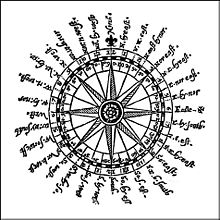Portrait of a Character – Kirin (Kira) Sato
Kirin has a changing destiny.
Origins
At the end of Reversal, Empress Hoshi is looking for a little brother for her son, Jun. But Jun’s father, Ritchie Daniels, is dead – or, at least, that’s what the Empress believes. Plus she wants a different father for her second-born. Her strategy is to have a lot of children, all from different fathers. This is to cement her partnerships with as many of the men on her senior staff as possible. Aidan MacKenzie is a more logical choice than might seem on the surface. He has just been disgraced and busted to babysitter. But he is someone who is going to harbor growing resentment. Therefore, she needs to shield herself somehow. Because Aidan could become a serious threat. Plus, despite his low status, Aidan is attractive; this justifies Hoshi’s interest in him.
In First Born, I make it clear that the existence of Jun is problematic for several reasons, not the least of which being that Kirin should have been the Empress’s sole successor. However, in order that Jun could be suffered to live, Kira must be subordinate. As a result, they rule jointly upon Hoshi’s death, as is indicated in Who Shall Wear the Robe and Crown?
Portrayal
Kira is played by Korean actor Kang-Ho Song.

Kang-Ho Song as Kira MacKenzie Sato
I like the actor’s look but admittedly I know very little about him. But I believe that Snow Piercer may be his first English film.
I like that he’s decent-looking but not knock-out handsome.
Personality
Tall, a bit awkward and smart, Kira is possibly the most sympathetic of the royal children in Temper. He cares about Marie Patrice, and is her choice. But she is also a social climber and so she flirts with Jun and also threatens to go to Takeo, not knowing that Takeo is gay. She sometimes mentions Arashi and Izo in that way, too. For her, love takes a back seat to what she can get out of a potential mate. Kira’s father has the lowest status on the ship, but at least he’s known, unlike Arashi’s sire. That status counts for a lot in Empy’s world. And so it matters to Kirin as well.
As a teenager, his name embarrasses him. It means dark, but he feels the -a ending sounds feminine. He wants everyone to call him Kirin instead, which means giraffe. In Temper, I reveal that giraffes are extinct in the Mirror Universe.
Relationships
Marie Patrice Beckett
Throughout Temper, Kira chases Empy, but Empy (mainly) resists. They have some moments together, and some heat. But when it comes time for her to consider losing her virginity, she tells him that she’d rather give it to Jun. For Marie Patrice, that’s a way to raise her status. However, by the time the first alternative timeline in the story ends, Kira is the only one who she says good-bye to, and they kiss their farewell.
According to Rick Daniels, Kira marries an unknown woman, but they never have children. Furthermore, Kira predeceases Jun. And so for a while Jun is the sole Emperor once the tandem relationship dissolves with Kira’s demise.
Theme Music
Kira’s own theme is the Fine Young Cannibals’ She Drives Me Crazy.
Prime Universe
It is impossible for Kira to have a Prime Universe counterpart, but his analogue is Declan Reed, as they are both essentially outsiders.
Quote
“Something’s happening. Not just this – but you – something’s happening with you.”
Upshot
This somewhat put-upon character is the most positive portrayal of all of the royal children in the alternate timelines in Temper. And in the prime timeline, even though he remains on the ship (rather than escaping, like Takara and Takeo do). And he is somewhat under the Empress’s influence. Yet he still turns out to be a fairly decent human being. In Bread, crew members say he’s a bit of a wimp, but in He Stays a Stranger, he is shown to have something of a heart. It’s possibly to have some sympathy for Kirin, a dark giraffe of a man.











